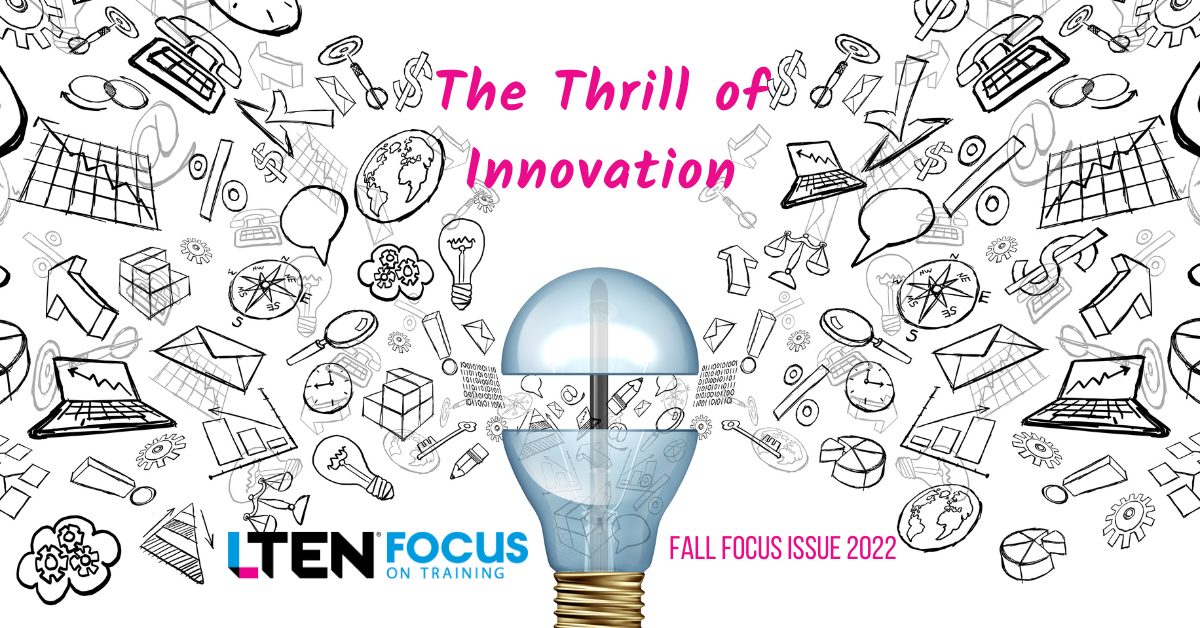
FROM THE PRESIDENT – Richard Sampson
Innovation is an everyday event for life sciences training
 Innovation always excites me. That doesn’t sound like a very out-on-a-limb position, as I think most of us
Innovation always excites me. That doesn’t sound like a very out-on-a-limb position, as I think most of us
get a little thrilled by something new, something original, something clever. That can be something as simple as watching James Bond find a new way to get out of trouble, watching your favorite athlete push herself farther or watching your kid creatively excuse a poor decision. In that last case you may not show it, but you’re a little impressed inside.
Here’s another impressive fact: Innovation is an everyday event for life sciences training. While some of our non-training friends may enjoy the status quo of predictability, that’s not the world we live in.
Everyone innovates when something major happens, like a pandemic, hurricane or recession – that’s human nature and survival instinct kicking in. It’s noteworthy, but I’m talking about the more run-of-the-mill innovation, the kind that’s driven by desire more than need, by creativity more than panic.
I’m talking about what life sciences trainers do routinely. Impress learners, colleagues and leadership simply because it’s what they need to do.
Typical innovation happens in a couple of ways.
Sometimes when presented with a situation, teams gather, review where they are and make a plan. Remember that great scene in Apollo 13, where the NASA mission leaders gather scientists together in a room that contains everything that’s available on the failing spacecraft? These are the tools, they said. How do we fix the problem?
But sometimes, innovation is a bolt from the blue. Remember Moneyball? Oakland A’s Manager Billy Beane had an epiphany that brought statistical data to the diamond and took a lean-budgeted team into the playoffs.
Innovation isn’t always that dramatic, of course. But it’s still exciting to see an idea come to form, to feel the energy build and to watch the plan come together. We may not be able to control when and where innovation happens, but we can count on the fact that it’s there, lurking in the background and ready to step in. Want more examples? Well, get ready to turn the page. In this issue of LTEN Focus on Training magazine, we are thrilled to share some appropriately exciting stories of innovative training. For instance:
- My LTEN Board of Directors colleague Greg Adamson helped arrange for two of his teammates, Deanna Gokhman and Aaron Alspach, to share an innovative story of escape room training at Olympus, and the lessons everyone learned.
- Bayer is sharing innovations with us twice in this issue. First up Guest Editor Tracey DeSilva sets the stage in a column on balancing learning and innovation, leading to this issue’s cover story, where Bayer’s Renee Landry and Rachel Lamb share how innovative thinking helped support the learning
journey. - You’ll also hear about innovation around instructor assessment, supporting learning in the moment of need, building hybrid training and developing high-potential leaders.
Innovation is both a process and an outcome. Maybe we can’t always control when it’s needed or even when it works, but we can be certain of one thing: By building, celebrating and sharing our innovations, we raise the bar and reap the rewards.
Your turn – flip the digital pages (an innovation in itself) and start getting inspired. And then, tell us about it. Share with me, reach out to the LTEN staff, ring whatever bell you need to ring.
When innovation happens, it’s exciting. When it works, it’s comforting. And when it spreads, it’s unstoppable. Be a part of that.
Richard Sampson is president of the LTEN Board of Directors and vice president, global training & development, global commercial operations, for Cepheid. Email Richard at richard.sampson@cepheid.com.








